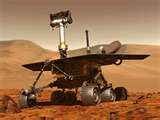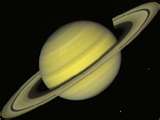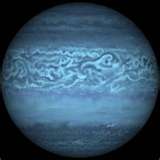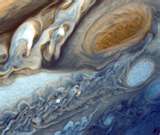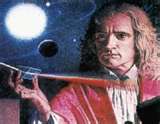Planets Of The Solar System! Trivia
(171).jpg)
Are you familiar with the planets of the solar system? Do you believe you have enough knowledge to pass this quiz? The solar system is bound by gravity, where the Sun is the center and objects orbit the Sun directly. We have eight planets that orbit this giant star; try this quiz if you want to learn more.
- 1.
Which planet is closest to the sun?
- A.
Venus
- B.
Earth
- C.
Mercury
- D.
Mars
- E.
Jupiter
Correct Answer
C. MercuryExplanation
Mercury is the closest planet to the sun. It orbits the sun at an average distance of about 36 million miles, which is much closer than any other planet. Its proximity to the sun also means that it has a shorter orbit, completing one revolution around the sun in just 88 Earth days. This makes Mercury the closest and fastest planet to the sun in our solar system.Rate this question:
-
- 2.
NASA robots Spirt and Opportunity were sent to explore which planet?
- A.
Venus
- B.
Uranus
- C.
Saturn
- D.
Mars
- E.
Mercury
Correct Answer
D. MarsExplanation
NASA sent the robots Spirit and Opportunity to explore Mars. This is evident from the fact that Mars is listed as one of the options and is the correct answer.Rate this question:
-
- 3.
Which of these is a moon of the planet Mars?
- A.
Archos
- B.
Phobos
- C.
Ganymede
- D.
Io
- E.
Europa
Correct Answer
B. PhobosExplanation
Phobos is a moon of the planet Mars. It is the larger and innermost of the two moons orbiting Mars. It was discovered in 1877 and is named after the Greek god Phobos, who was the personification of fear in Greek mythology. Phobos is irregularly shaped and has a heavily cratered surface. It is one of the smallest moons in the solar system and is gradually moving closer to Mars.Rate this question:
-
- 4.
What are the rings around Saturn made of?
- A.
Rubbish
- B.
Metal
- C.
Ice and dust
- D.
Spaceships
- E.
Light
Correct Answer
C. Ice and dustExplanation
The rings around Saturn are made of ice and dust. This is supported by scientific evidence and observations from space probes. The rings consist of countless particles of ice ranging in size from tiny grains to large chunks, along with dust particles. These particles reflect sunlight, giving the rings their characteristic brightness. The composition of the rings has been confirmed through spectroscopic analysis, which identifies the presence of water ice and other organic compounds. Therefore, ice and dust are the primary components of the rings around Saturn.Rate this question:
-
- 5.
Which planet is the biggest in our solar system?
- A.
Neptune
- B.
Jupiter
- C.
Uranus
- D.
Earth
- E.
Venus
Correct Answer
B. JupiterExplanation
Jupiter is the largest planet in our solar system. It has a diameter of about 143,000 kilometers, which is more than 11 times the diameter of Earth. Jupiter's immense size is due to its strong gravitational pull, allowing it to accumulate a large amount of gas and dust during its formation. Its mass is more than twice the combined mass of all the other planets in the solar system. Jupiter also has the most number of moons, with at least 79 known satellites orbiting around it.Rate this question:
-
- 6.
Which of these objects is now considered a dwarf planet?
- A.
The moon
- B.
Earth
- C.
Neptune
- D.
Pluto
- E.
Saturn
Correct Answer
D. PlutoExplanation
Pluto is now considered a dwarf planet because in 2006, the International Astronomical Union (IAU) redefined the definition of a planet. According to the new definition, a planet must meet three criteria: it must orbit the sun, it must be spherical in shape, and it must have cleared its orbit of other debris. While Pluto meets the first two criteria, it does not meet the third as it shares its orbit with other objects in the Kuiper Belt. Therefore, it was reclassified as a dwarf planet.Rate this question:
-
- 7.
Where did the planet Mercury's name come from?
- A.
The metal
- B.
The roman messenger of the gods
- C.
Temperature gauges
- D.
An astronomer named 'Mercury'
- E.
A competition
Correct Answer
B. The roman messenger of the godsExplanation
The planet Mercury's name comes from the Roman messenger of the gods. In Roman mythology, Mercury was the swift messenger of the gods and the god of commerce, travel, and communication. The planet's name was given to it because of its fast orbital speed around the sun, resembling the swiftness of the Roman god.Rate this question:
-
- 8.
What is the farthest planet from our sun?
- A.
Neptune
- B.
Mercury
- C.
Mars
- D.
Venus
- E.
Jupiter
Correct Answer
A. NeptuneExplanation
Neptune is the farthest planet from our sun. It is located about 4.5 billion kilometers away from the sun, making it the farthest planet in our solar system. Neptune's distance from the sun allows it to have a very long orbital period, taking about 165 Earth years to complete one orbit. Its distance from the sun also contributes to its extremely cold temperatures, with an average temperature of -214 degrees Celsius. Additionally, Neptune is known for its beautiful blue color and its strong winds, making it a fascinating planet in our solar system.Rate this question:
-
- 9.
Why does Earth look blue from space?
- A.
Because of the dark
- B.
The sky reflecting back into space
- C.
The sunlight bouncing off the moon
- D.
The water on its surface
Correct Answer
D. The water on its surfaceExplanation
The Earth looks blue from space because of the water on its surface. The oceans and other bodies of water on Earth reflect the sunlight, and this reflection gives the planet a blue appearance when viewed from space.Rate this question:
-
- 10.
How many moons does Uranus have?
- A.
1
- B.
A dozen
- C.
3
- D.
27
- E.
9
Correct Answer
D. 27Explanation
Uranus has 27 moons. This is a well-known fact about the planet. Moons are natural satellites that orbit around a planet, and Uranus has a relatively large number of them compared to other planets in our solar system. These moons vary in size and shape, and they play an important role in studying the dynamics and characteristics of Uranus.Rate this question:
-
- 11.
How wide is Jupiter?
- A.
About the same size as Earth
- B.
Twice as wide
- C.
Half the size
- D.
50 times as wide
- E.
Eleven times as wide
Correct Answer
E. Eleven times as wideExplanation
Jupiter is approximately eleven times wider than Earth.Rate this question:
-
- 12.
Who discovered Uranus?
- A.
Colonel Sanders
- B.
William Herschel
- C.
Neil Armstrong
- D.
Buzz Lightyear
- E.
Mr. Hubble
Correct Answer
B. William HerschelExplanation
William Herschel is the correct answer because he was the astronomer who discovered Uranus. In 1781, Herschel observed a new celestial object and initially thought it was a comet. However, further observations revealed that it was a planet beyond Saturn, making it the first planet to be discovered in modern history. Herschel's discovery revolutionized our understanding of the solar system and expanded our knowledge of the universe.Rate this question:
-
- 13.
How long is a year on Jupiter?
- A.
365 days
- B.
Six months
- C.
Twelve years
- D.
50 years
- E.
87 days
Correct Answer
C. Twelve yearsExplanation
A year on Jupiter is equivalent to approximately 12 Earth years. This is because Jupiter takes about 12 Earth years to complete one orbit around the Sun. Therefore, the correct answer is twelve years.Rate this question:
-
Quiz Review Timeline +
Our quizzes are rigorously reviewed, monitored and continuously updated by our expert board to maintain accuracy, relevance, and timeliness.
-
Current Version
-
Nov 16, 2023Quiz Edited by
ProProfs Editorial Team -
Jul 21, 2009Quiz Created by
Amsroom8
 Back to top
Back to top




